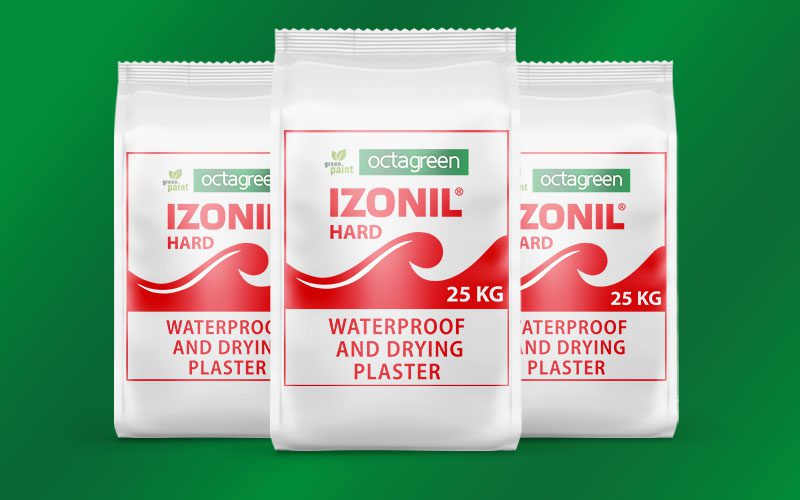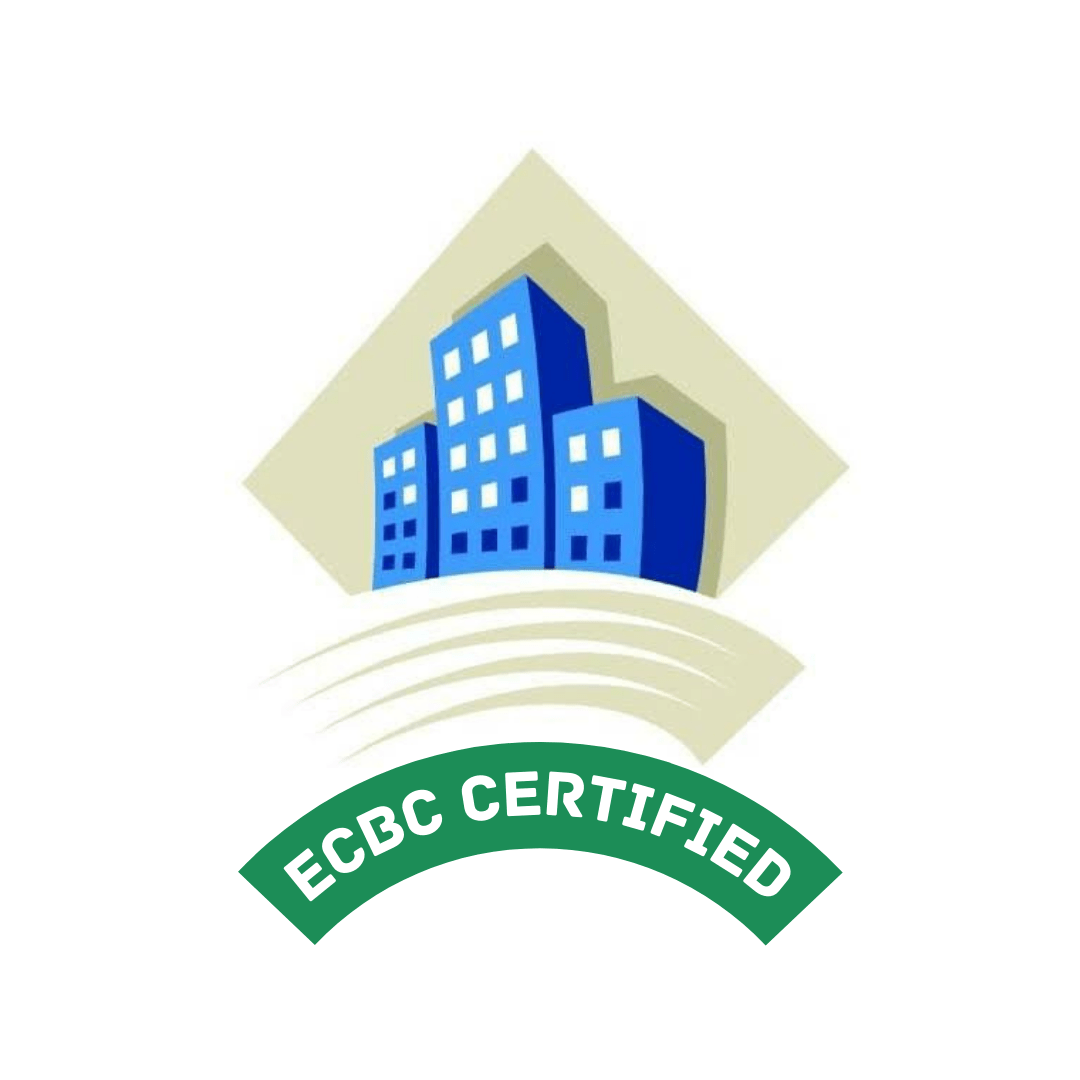IZONIL Waterproof Plaster
100% waterproof plaster mortar (resistant against water pressure 1 BAR / 0.1 MPa with water penetration less than 1 mm) and dehumidifying plastering mortar (with a high volume of micropores which allows the permanent dehumidifying process of the wet substrate). Meets the requirements of EN 998-1 as renovation plaster. Provides a long-term solution to a problem of water penetration on the surface of the wall (when applied on the negative side) and a long-term solution to a problem of water penetration to the wall (when applied on the positive side) and simultaneously provides a long-term solution of ventilation and drying of wet walls (when applied both on the negative and positive side). It does not contain any harmful or toxic ingredients (suitable to be used in direct contact with drinking water).
Submit the inquiry to get direct support from our product team
Products Specification
Industrially dry-mixed 100% waterproof breathable plastering mortar with dehumidifying ability based on Portland cement, silica sand, unique natural admixture (Izocomponent) and reinforced with fibers for external/internal and positive/negative application as a replacement for general purpose plastering mortars, renovation plastering mortars and diffusion-closed waterproof plaster membranes and coatings.
SURFACE PREPARATION
The plaster is designed to be applied on vertical substrates (brick wall, light concrete block wall, rough concrete wall) and horizontal substrates (concrete floors and concrete roofs). The substrate must be solid, cement grout-free, free of dirt, oil, grease, dust, paint or other dirt and loose parts. It must not be greasy, acid, water-repellent or alcoholic base. The substrate must be thoroughly moistened immediately before applying the fresh plaster mixture and subsequently, it is recommended to apply cement adhesive bridge (Portland cement mixed with water) on the substrate. The thickness of the cement bridge should not exceed a few millimetres. The plaster is applied prior to the hardening of the cement bridge.
MIXING
It is advisable to use a gravity mixer or hand-held electric mixer to mix the plaster. Water is always added first, 4.0 – 4.7 liters of water per 25 kg of dry plaster. Nothing else is added into mixed composition. Gravity mixer: Add the prescribed amount of water into the mixer first, followed by powder mixture and mix for at least 10 minutes in constant slowly mixing, into a homogeneous smooth mass. Hand-held electric mixer: Add the prescribed amount of water into a suitable mixing container, followed by a powder mixture. Mix for at least 5 minutes with constant slowly mixing, into a homogeneous smooth mass. Then leave the plaster rest for 5 minutes and then mix again for 1 minute. Process the mixed material within 3 hours.
APPLICATION
Plaster is applied manually (using standard tools for plastering) or by a plastering machine pump (it is important to set up and test the fresh mixture for a specific type of machine pump before application). Although plaster contains PP fibers for the elimination of surface hairline cracks, it is recommended to use fiberglass mesh to overlap sensitive areas (connection of 2 different materials, e.g. bricks and concrete, corners of walls, corners of windows and doors, connections of walls and floors etc.). It is also possible to use fiberglass mesh for the whole applied area. Recommended specification of fiberglass mesh is 5 mm x 5 mm (size) and 145 g / m2 (weight). Fiberglass mesh is applied close to the final surface. First, apply approx. 70% of the total thickness of plaster (e.g. 7 mm at 10 mm total thickness), then gently press fiberglass mesh with a trowel into a fresh layer of plaster and immediately apply the rest 30% of the total thickness of plaster (e.g. 3 mm at 10 mm total thickness). Plaster is applied in a maximum of 3 layers with a total thickness maximum of 30 mm. Total thickness is determined by the degree of moisture load in the substrate and by the requirement of layer thickness to align the surface of the wall. One layer is applied in a total thickness of 10-15 mm. Before application of the next layer, it is recommended to slightly roughen the surface of the previous layer. Each layer is applied at least 24 hours after the previous layer was applied. In the case of application 2-3 layers, it is enough to use fiberglass mesh in the last layer in the manner described above. The surface of waterproof plaster is finished in the same way as ordinary cement-based plasters by foam trowel. We recommend applying plaster at temperatures from +5 to + 25 C. Do not apply if freezing weather is expected. Do not apply the plaster in direct sunlight and/or strong wind or rain. Protect from rain for at least 24 hours from the application (at 20°C). If the plaster is applied inside, try to ensure proper room ventilation to achieve optimum wall drying.
CLEANING
Clear water is used for the disposal of waterproof plaster from the tools and equipment. Hardened material can be disposed of only in a mechanical way. CARE AFTER APPLICATION It is necessary to prevent the plaster from too fast drying since the optimal moistness enables permanent hydration of
CARE AFTER APPLICATION
It is necessary to prevent the waterproof plaster from too fast drying since the optimal moistness enables permanent hydration of cement materials and minimization of cracking. Protect freshly applied plaster prior to rapid drying using appropriate protective methods for at least 48 hours, especially in dry and windy weather, or when exposed to direct sunlight.
FINAL COATING / PAINTING
It is recommended to let the waterproof plaster dry for at least 3 weeks before final coating. The surface of plaster can be coated with an interior / exterior coat of paint. It is recommended to use highly breathable – diffusion-open decorative coatings/paints (e.g. silicate paints, cement paints, lime paints). Check the suitability of your coating/paint with the distributor/retailer. In case tiles are used, it is recommended to roughen the surface of the plaster and use the usual tile adhesive to stick the tile to the surface. Grout for tile gaps should be breathable (not silicone-based) to preserve the breath ability of the surface.
Technical Specification
| Appearance / color | Powder / grey |
| Chemical composition | Silica sand, Portland cement, natural admixture Izocomponent, PP fibres |
| Size of silica sand particles | 0 – 0.6 mm (SOFT version), 0 – 2 mm (ROUGH version) |
| Packaging | 25 kg paper bag |
| Shelf life | Minimum 18 months |
| Water/powder ratio | 4.0 – 4.7 liters of clean water / 25 kg of dry plaster |
| Pot life/workability | Minimum 3 hours (at temperature 20 °C) |
| Thickness of layer | One layer from 10 mm to 15 mm, maximum 3 layers with total thickness 30 mm |
| Coverage / consumption |
At thickness 10 mm 1 m2 = 12.5 kg of dry plaster 25kgofdryplaster =2m2 At thickness 20 mm 1 m2 = 25 kg dry plaster 25 kg dry plaster = 1 m2
|
Advantages
- World-unique plastering mortar simultaneously 100% waterproof, breathable and dehumidifying Resistant against penetration of rainwater and running water
- Resistant against penetration of water under pressure up to 1 BAR (tested according to EN 12390-8) Water penetration less than 1 mm under 1 BAR water pressure during 72 hours test
- Meets requirements for general-purpose plastering mortar (EN 998-1)
- At the same time meets requirements for renovation plastering mortar (EN 998-1)
- Highly breathable (water vapor diffusion coefficient
- Excellent adhesion to the substrate with minimum waste during application
- Resistant against salt crystallization and sulfur-resistant
- Applicable on a damp surface
- Applicable manually or by plastering machine
- Applicable above-ground and underground, externally and internally, positive and negative side ⨀ Non-toxic, suitable to be used in direct contact with drinking water.
User Reviews
Be the first to review “IZONIL Waterproof Plaster” Cancel reply
General Inquiries
There are no inquiries yet.














There are no reviews yet.